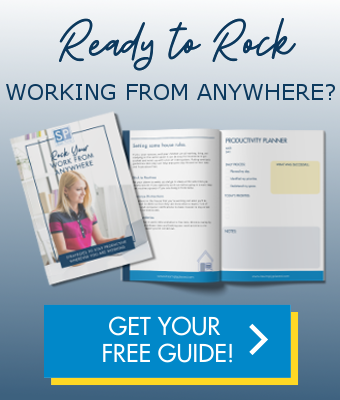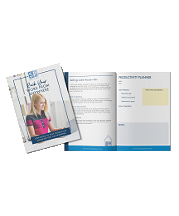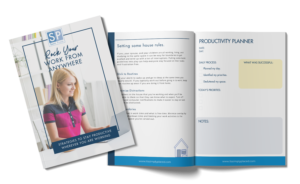
Want to increase organization and productivity at work this year? Guest blogger, Jeriann Watkins has some ideas:
The New Year is a great time to organize your office space and workflow. Getting things organized is a start, but keeping them organized will help you experience success on an ongoing basis. Once you create a new organizational system, you’ll want to make sure you’ve put some things in place to help you stick to the new plan. Organization is not a permanent state of being; it is a fluid process that takes continual effort. Below are some of the top areas where people benefit from getting organized, and once you’ve done so, some ideas to help you keep them from devolving back to their scattered, unorganized state.
Inboxes are often one of the first places people seek to clean up in their office workflow. The daily influx of important notices, minor announcements, quick check-ins, and junk mail often lead to an overwhelming mess of clutter.
Often, cleaning up your inbox means going through every single email, deleting irrelevant messages, and putting useful information into folders. Unfortunately, many stop here. In order to keep yourself from having to sort through thousands of emails every few months, you should utilize folders and labels daily.
If you use Gmail, this is easy. You’ll automatically have a label for every folder you create. As emails come in, you can label them with the relevant folder name and they’ll stay in your inbox. Then when you no longer need to see the email as a reminder, you can just hit “archive” and it will go to the proper folder. This makes it easy to do a quick 2-minute inbox review every day to make sure you’ve acted on any pertinent emails, and archive anything you don’t need anymore.
Outlook users can set rules or Quick Steps to quickly file emails into reference folders, sometimes even bypassing the inbox altogether when that makes sense.
Your Calendar
Some people have their whole day scheduled out in order to be productive. Others need to have the flexibility to move things around. However you work best, your calendar will not be useful if you let it get clogged up with miscellaneous junk. This means avoiding automation when it comes to company-wide meetings. Don’t let company agendas filled with meetings and events you’re not needed at be incorporated into your calendar.
If your job entails meetings with clients, customers, or other outside entities, you’ll want to make sure your scheduling system is streamlined. This means automating it as much as possible, while having one manual overview point to prevent mistakes.
Your daily calendar can help increase productivity and break the cycle of procrastination if utilized correctly. If you tend to put things off until the last minute, giving yourself preemptive deadlines can be an effective way to prevent oversight. Spending 5 minutes at the end of every day analyzing what you got done and whether you used your time effectively will help you constantly improve your productivity and output, and allow you to make necessary adjustments for the upcoming day. 5 more minutes to plan the next day will go a long way to help you hit the ground running.
Office Clutter
When it comes to productivity, a clear work space means a clear mind. It’s important to keep non-essential items off your desk and properly stored. For documents, this might mean filing cabinets, or better yet, switching to digital storage. If you have a significant amount of office supplies that need to be readily available, consider cabinets or wall shelving so you can keep your desk top and drawers uncluttered. If you work freelance or remotely, check out these home office organization tips for unique ways to keep your home and work spaces distinct from each other.
As a bonus, some office-space-saving tactics are also good for the environment. Laptops take up less space on your desk, are easy to transport, and use less energy than desktop computers. By limiting the amount of documents you print, you reduce clutter, prevent the chance of misplacing information, and reduce your contribution to the amount of physical waste your office produces.
These are just some ways you can organize your office space to promote continued intention and prevent clutter from sneaking into your work day. Hopefully by this time next year, when you’re thinking of things you can improve upon, organization will be one area where you’re already covered.
About the Author: Jeriann is a blogger who balances a full-time job and starting her own craft business, as well as writing for her blog, dairyairhead.com. Check out her writing for craft organization advice, wedding planning adventures, and tales from the marketing world.







